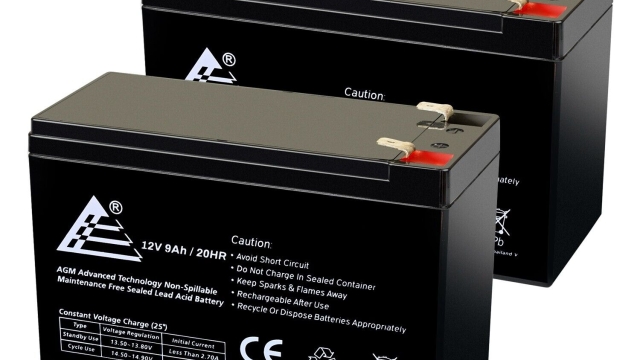
In our increasingly digital world, maintaining a reliable power supply is crucial for both personal and professional settings. Uninterrupted power supply or UPS systems play a vital role in safeguarding valuable equipment and data during unexpected power outages. At the heart of these systems are UPS batteries, which provide the backup energy needed to keep devices running until power is restored or critical operations are securely shut down.
Understanding the different types of UPS batteries and their functions can empower users to make informed decisions about their power backup solutions. From home offices to large server rooms, knowing how to choose and maintain the right UPS batteries is essential for achieving peace of mind. This guide aims to equip you with the knowledge necessary to select the most suitable UPS battery for your needs, ensuring that your devices remain protected and operational in times of uncertainty.
Understanding UPS Batteries
UPS batteries, or Uninterruptible Power Supply batteries, are essential components in safeguarding electronic devices from power disruptions. These batteries provide temporary power during outages, ensuring that critical equipment remains operational. They come in various types, such as lead-acid and lithium-ion, each with its own advantages in terms of cost, lifespan, and performance. Understanding these options is crucial for selecting the right UPS system for your needs.
The primary function of UPS batteries is to deliver backup power and protect against surges and spikes in electricity. When the main power supply fails, the UPS battery activates automatically, allowing users to save their work and shut down devices orderly. Additionally, UPS systems often include features such as voltage regulation, which helps maintain a stable power output, further protecting sensitive equipment from damage.
Choosing the right UPS battery involves assessing factors like power capacity, runtime, and compatibility with the devices you plan to protect. It is also important to consider the environment in which the UPS will operate, as battery performance can vary based on temperature and humidity. By carefully evaluating these elements, users can ensure they invest in a reliable UPS battery that enhances peace of mind during unexpected power interruptions.
Choosing the Right UPS Battery
When selecting a UPS battery, your first consideration should be the power requirements of the devices you intend to support. It’s essential to calculate the total wattage and determine how long you need the UPS to provide backup power during an outage. Most UPS systems will have a power rating in VA (volt-amps), which can guide you in matching the right battery capacity to your equipment. Ensure that the UPS battery can handle the load without compromising performance.
Next, familiarize yourself with the different types of UPS batteries available. Lead-acid batteries are common due to their affordability and reliability, while lithium-ion batteries offer longer lifespans and faster charging times. Each type has its pros and cons, so think about your budget, space limitations, and specific usage scenarios. Your choice in battery type will significantly impact the overall efficiency and longevity of your UPS system.
Lastly, consider the maintenance requirements and lifespan of the UPS battery. Some batteries need regular maintenance checks, while others are designed to be maintenance-free. Understanding the typical lifespan of a battery type will help you plan for future replacements and avoid potential downtime. Always refer to the manufacturer’s specifications and user reviews to make an informed choice that aligns with your peace of mind and operational needs.
Uninterrupted Power Supply
Maintaining Your UPS Battery
Regular maintenance of your UPS battery is crucial to ensure its longevity and optimal performance. Start by checking the battery’s physical condition at least once every six months. Look for signs of wear, such as swelling, leaks, or corrosion on the terminals. If you notice any of these issues, it may be time to replace the battery to prevent potential failures during a power outage.
Another important aspect of maintenance is keeping the battery clean and free from dust. Use a soft cloth to wipe down the exterior of the battery and its connections. It is also recommended to periodically monitor the battery’s charge status using the built-in monitoring system if available. This will help identify any irregularities early on so that corrective actions can be taken promptly.
Finally, follow the manufacturer’s recommendations for charging cycles and replacement schedules. Most UPS batteries have a specific lifespan, typically ranging from three to five years, depending on usage and maintenance. By adhering to these guidelines, you can maximize the efficiency of your UPS battery and ensure that it continues to provide reliable power when you need it most.
